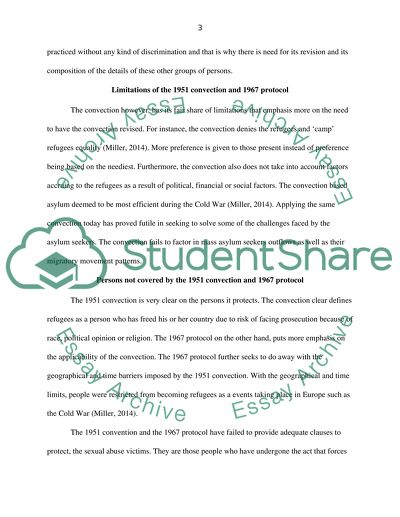Cite this document
(“What are the other categories of persons in need of protection not Essay”, n.d.)
What are the other categories of persons in need of protection not Essay. Retrieved from https://studentshare.org/social-science/1647170-what-are-the-other-categories-of-persons-in-need-of-protection-not-defined-in-the-1951-refugee-convention-and-the-1967-protocol
What are the other categories of persons in need of protection not Essay. Retrieved from https://studentshare.org/social-science/1647170-what-are-the-other-categories-of-persons-in-need-of-protection-not-defined-in-the-1951-refugee-convention-and-the-1967-protocol
(What Are the Other Categories of Persons in Need of Protection Not Essay)
What Are the Other Categories of Persons in Need of Protection Not Essay. https://studentshare.org/social-science/1647170-what-are-the-other-categories-of-persons-in-need-of-protection-not-defined-in-the-1951-refugee-convention-and-the-1967-protocol.
What Are the Other Categories of Persons in Need of Protection Not Essay. https://studentshare.org/social-science/1647170-what-are-the-other-categories-of-persons-in-need-of-protection-not-defined-in-the-1951-refugee-convention-and-the-1967-protocol.
“What Are the Other Categories of Persons in Need of Protection Not Essay”, n.d. https://studentshare.org/social-science/1647170-what-are-the-other-categories-of-persons-in-need-of-protection-not-defined-in-the-1951-refugee-convention-and-the-1967-protocol.


